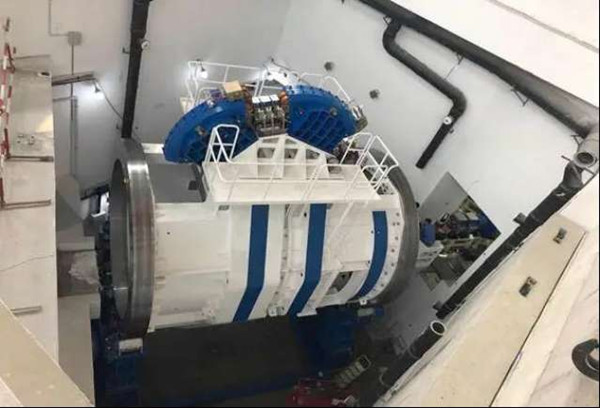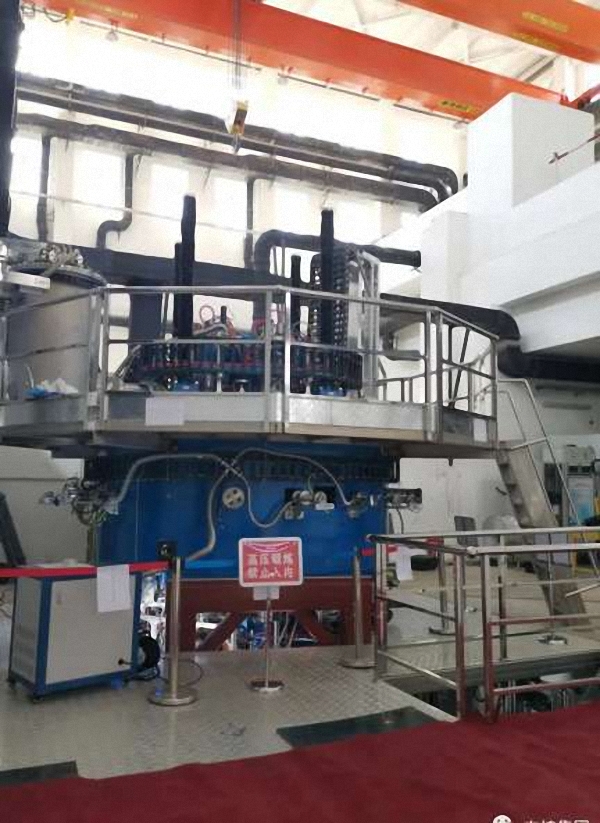CNNC marks progress in independent R&D of proton therapy system

The 360° rotating frame and beam transport line. [Photo/CNNC]
The proton beam energy of China's self-developed superconducting cyclotron reached 231 MeV for the first time on Sept 21, marking an important milestone in the growth of the proton therapy system independently developed by China National Nuclear Corporation (CNNC).
The 230 MeV superconducting cyclotron, designed and developed by CNNC, aims to develop a new generation of high-dose rate, miniaturized precision radiotherapy equipment with independent intellectual property rights, so as to gradually realize the localization of cyclotron equipment for the diagnosis and treatment of major diseases such as malignant tumors and cardiovascular and cerebrovascular diseases in China.
According to public reports, this is the first time that the proton beam energy of a compact superconducting cyclotron, independently developed in Asia, has reached more than 230 MeV. Japanese institutions have been developing similar devices since 2016.
Experts said that such a large superconducting cyclotron, in addition to being used for proton therapy, also has important applications in aerospace devices, core chip development and other application fields.

The main equipment of the 230 MeV superconducting cyclotron [Photo/CNNC]
- China Institute of Atomic Energy
- Nuclear Power Institute of China
- Southwestern Institute of Physics
- China Nuclear Power Operation Technology Corporation, Ltd.
- China Nuclear Power Engineering Co., Ltd.
- China Institute for Radiation Protection
- Beijing Research Institute of Uranium Geology (BRIUG)
- China Institute of Nuclear Industry Strategy (CINIS)
- China Nuclear Mining Science and Technology Corporation


